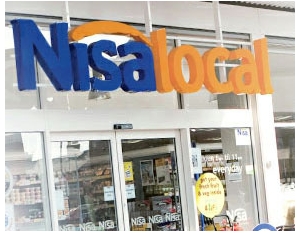
Retail consortium Nisa Retail has evolved its IT to support independent retailers that operate under its brand. At its heart is an order capture system (OCS) for orders placed by its retailers.
Nisa has been running for 35 years. It began as a buying consortium, then became a distributor. But in the last two years it has moved back to the high street and now has 800 stores operated by independent retailers.
“Once an order is received, we try to up-sell to get the best out of the order. If products are not available, rather than refuse the order, we can advise the retailer and offer preferential pricing or volume discounts, said Nisa Retail's head of IT, David Morris, who has worked at the retail consortium for 19 years.
Morris started out as a programmer and now, as head of IT, he manages a team of 48 to support warehousing, network infrastructure and the company's OCS.
Nisa Retail uses Compuware to improve order processing
For the last 15 months, Nisa Retail has been using Compuware dynaTrace to address the issues presented by the ever-growing complexity of systems and environments, and increasing business and user demands. The Compuware dynaTrace tool has allowed Nisa Retail to identify issues and bottlenecks in its OCS. As a result, page response times on the OCS are now, on average, 46% faster. DynaTrace has also reduced database load, with utilisation dropping from 22% to 13%.
Morris said dynaTrace was originally bought to tackle peaks in demand when retailers placed orders on the OCS. “We have a cut off each day for orders placed with Nisa Retailers. The system previously relied on faxes being sent by retailers to replenish stock levels. The move from faxing to online ordering has meant the system remains idle for 23 hours, Morris explained. However, as the deadline hour approached, Nisa Retail's OCS would experience a massive peak in usage. “The system we built encountered performance issues. The number of orders going in causing the system to crash,” he said.
DynaTrace allowed his team to identified the key bottlenecks. “We could understand application and database performance,” he said.
The order capture system links Nisa Retail with its retailers. Morris believes IT can provide much more. “For retailers, running stock control is a management overhead. We need to provide more of a service for our retailers,” he said.
Today, they provide their own HR, and finance systems. “There is no reason we can’t offer them a cloud service for HR and finance,” he added. Morris believes that such a system would not only simplify the retailer's IT, it would also mitigate external support.
During Morris' long tenure at Nisa, IT has changed significantly. When he started, the web was only just starting to grow; MS-DOS and Windows 3.1 were the dominant PC platforms and the industry was beginning to sell the concept of client-server computing, to allow PCs to take some of the workload, previously run on large computer systems.
“At the start, IT was an unnecessary evil. It was expensive and delivered little benefit,” he says but now, IT is integral to retail operations. “Over time, more people have adopted IT, from the point of sale right through to the back office. A lot of our retailers are innovative; they use tablet applications and wireless broadband. They expect the availability of information at any point,” he said.
The shift in the availability of information is mirrored in how people now want shop. “These days, the concept of being always available means people are surprised if a shop is closed,” he said. Although Nisa Retail stores are not open 24 hours a day, “Our retailers want to be available. It’s all about being local. Our stores are at the heart of the community and can present information 24 hours a day.”
He said Nisa Retail's main IT comprises an Oracle 10g database with an Oracle application server and the Oracle Retail 10.2 merchandising system. The company uses its own order management system OCS, built using Microsoft .net, that talks to the Oracle merchandising system. OCS is an online application that gathers orders from the firm's independent retailers every day. “We have a large distribution warehouse in Scunthorpe and retailers order two to three times a week,” explained Morris.
Some trends in retail IT are no longer de rigueur, such as Nisa Retail’s use of electronic data interchange (EDI), for communicating orders across the retail supply chain. “Over the years, traditional EDI has dropped off. Our order capture system has its own XML interface – to exchange to and from our own systems. We still use EDI with our suppliers, but not with our retailers,” said Morris.




